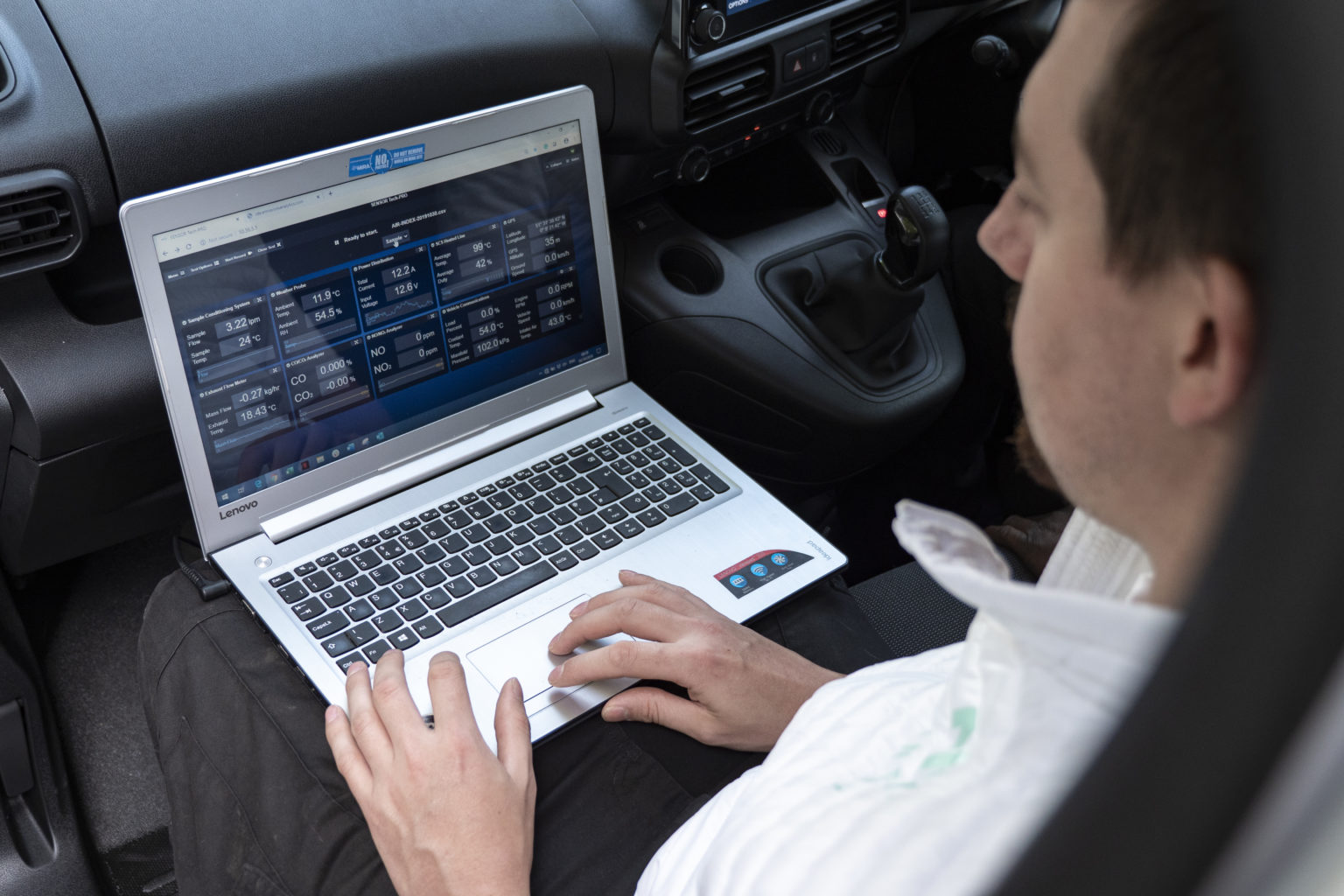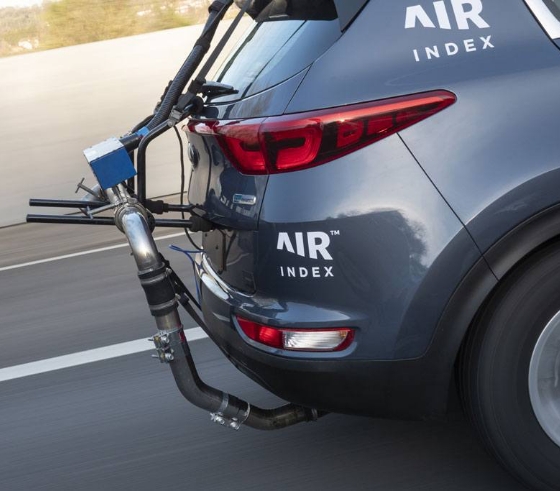NEW AIR Index for vehicle interior air quality launched: The Cabin AIR Index is an easy-to-understand rating providing clarity for drivers and car buyers.
First independent rating of filter and ventilation systems to protect vehicle occupants from exterior pollution.
The AIR Index
The AIR Index helps consumers, fleet managers and policy makers make informed decisions based on independent, on-road emission tests of tailpipe emissions and air quality inside the vehicle.
The AIR Index rates three key characteristics of each vehicle during real-world urban driving; the NOx emissions which affect air quality, the CO2 produced by the vehicle which contributes to global warming and the effectiveness of the ventilation system and filter to protect vehicle occupants from exterior pollution. Ratings for each AIR Index range from A (the best) to E (the worst).
 CO2
CO2
An independently tested and verified
measure of how much CO2 is released
by each vehicle.
 Urban NOx
Urban NOx
An independent real-life measure of
harmful NOx emissions contributing
to poor air quality.
Low Emission Petrol Cars
Find the lowest emission petrol cars on the market or find ratings for older vehicles.
Low Emission Diesel Cars
Choose the right diesel for you and compare vehicles with real-life emissions data.
Low Emission Vans
Find the lowest emission vans and light-duty vehicles from our on-road emissions tests.
Low Emission SUVs
See the independently tested list of the lowest emission SUVs on the market.
Fleet Managers
How the AIR Index can help fleet managers reduce the total cost of ownership (TCO) by choosing the cleanest vehicles to deliver long-term benefits.
Policy Makers
How policy makers can improve air quality in towns and cities with the AIR Index; a more realistic and accurate measure of NOx emissions than Euro ratings.
Vehicles Tested with the AIR Index
Confidence through transparency
The AIR Index has been led by a global alliance of scientists and organisations. We are committed to reducing harmful vehicle emissions by providing car and van buyers and policy makers with a trusted and independent way to evaluate each model.
While not every variant of every model can be tested, there is a programme underway to evaluate as wide a range of vehicles as possible. Data for tailpipe emissions of NOx emissions and CO2 are collected according to the CWA 17379 methodology, and interior air quality data is collected using the CWA 17934 methodology.
We also include partial AIR Index ratings of NOx emissions and CO2 for models which have not yet completed testing in full compliance with CWA 17379. These are displayed in the search results with the relevant AIR Index rating ‘greyed out’ as they are not full AIR Index ratings, but they do provide an indication of the expected result once a second vehicle has been tested.
The CEN Workshop Agreement CWA 17379 for collecting data on urban NOx emissions was initiated by Nick Molden of Emissions Analytics, which has tested more than 2,000 vehicles, including over 1,000 in Europe since 2011. Together with test data from several other organisations and companies, independent from car makers, the AIR Index has been created reflecting this extensive experience.
The CEN Workshop Agreement CWA 17934 for collecting vehicle interior air quality data was initiated by the AIR Alliance, under the chairmanship of Nick Molden.
Request a vehicle test
If there is a vehicle you would like to see tested, please let us know by sending an email to info@allowair.org for us to consider.
The AIR Index Method
Each car and van is independently tested in accordance with a voluntary standardised European protocol CWA 17379 or CWA 17934.
This approach allowed the practical experience gained from years of commercial on-road testing by Emissions Analytics to be combined with expertise from a wide range of leaders in emissions control, emissions policy and air quality.
The resulting standardised methods can be used by any test centre to collect comparative emissions data, which can then be fed into the AIR Index ratings system. Every AIR Index rating for urban NOx emissions and CO2 requires at least two vehicles of the same type to be tested at least three times, recording at least five x 10km trips, which each take approximately 20 minutes and in full compliance with the boundary conditions specified in the protocol.
For every AIR Index rating for cabin air quality, at least three separate tests of at least 30 minutes each in real-world driving between 30 km/h and 50 km/h must be conducted on each model.
The ventilation system is set to ‘fresh air’ mode with the air conditioning turned off and temperature set to 19°C in either automatic mode or fan at 50% speed.








